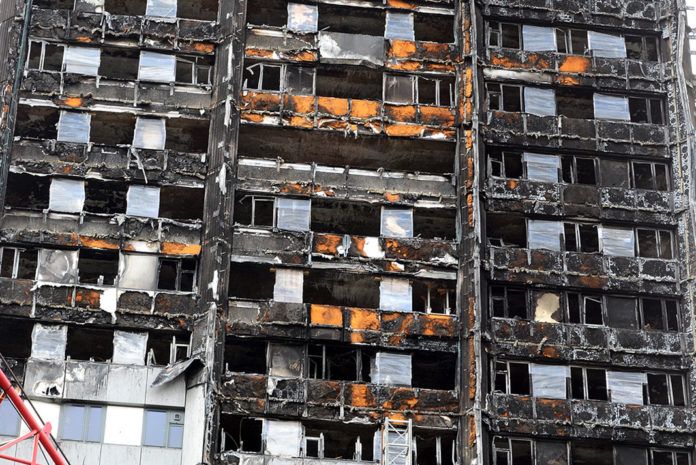The government has stepped in to speed up vital cladding replacement by fully funding the work, eliminating excuses used by some building owners and protecting leaseholders from the costs.
Around £200 million will be made available to remove and replace unsafe aluminium composite material cladding from around 170 privately owned high-rise buildings.
This step has been taken after private building owners failed to take action and tried to offload costs onto leaseholders.
Prime Minister, Theresa May, said: “It is of paramount importance that everybody is able to feel and be safe in their homes. That’s why we asked building owners in the private sector to take action and make sure appropriate safety measures were in place. And we’ve seen a number of private building owners doing the right thing and taking responsibility, but unfortunately too many are continuing to pass on the costs of removal and replacement to leaseholders. Today I can confirm we will now be fully funding the replacement of cladding on high-rise private residential buildings so residents can feel confident they are secure in their homes.”
Communities Secretary, Rt Hon James Brokenshire MP, said: “Although temporary measures are in place to ensure people living in these buildings are safe, too many owners are treating this as a permanent fix. Others are trying to pass on the costs to residents by threatening them with bills running to thousands of pounds. While some building owners have been swift to act, and I thank them for doing the right thing, I am now calling time on the delay tactics of others. If these reckless building owners won’t act, the government will.”
The government appreciates the work of Grenfell United and the UK Cladding Action Group who have campaigned prominently, outlining the challenges in getting private building owners to fund the replacement of cladding on their homes.
The government has already fully funded this work in social housing developments. However, private developers and freeholders have been too slow to act and leaseholders have been threatened with significant, often unaffordable, costs resulting in delays.
The latest figures show that 166 private buildings are yet to start works on removing and replacing ACM cladding, compared to 23 in the social sector.
Building owners will have three months to access the new fund. We will look carefully at those who fail to remediate and consider what further action can be taken.
Building owners and developers who have already fully funded the remediation of buildings are Pemberstone; Aberdeen Asset Management; Barratt Developments; Fraser Properties; Legal & General; Mace; and Peabody.
Following the Grenfell Tower fire, the government identified 176 private high-rise residential buildings with unsafe ACM cladding. According to the most recent data compiled by the Ministry of Housing, Communities and Local Government, 10 of these buildings have completed work to replace the cladding.
The fund will be available for private high-rise residential buildings (those containing homes). The government is already fully-funding the replacement of unsafe ACM cladding on social sector properties.
Following the Grenfell Tower tragedy, the government established a comprehensive building safety programme that included an independent review of fire safety and building regulations. Plans outlined on 18 December 2018 explain how the government will implement the recommendations made by Dame Judith Hackitt in her review of building regulations and fire safety.
Building owners will be able to register for the fund by early July.
Industry reaction
Jonathan O’Neill, managing director of the Fire Protection Association, welcomes the announcement from the Ministry of Housing, Communities and Local Government. He said: “At least this funding will give affected individuals some certainty about the safety and value of their homes. Following the success of the Inside Housing #EndOurCladdingScandal campaign, we will continue to call for the use of sprinklers, third-party certification and a ban on single staircases as the sole means of escape in tall buildings.”
Meanwhile, Lesley McLeod, chief executive officer of The Association for Project Safety, added: “Safety needs to be built in so, while the government’s commitment to additional funding to replace high-rise cladding is welcome, it is better sense to tackle construction risks at the outset. The Association for Project Safety (APS) believes it is vital everyone who lives in a high-rise home can be confident they are safe so safety must be the priority right from the planning stage.
“Safety is at the core of good design and the APS remains committed to working with the government and other professionals in the construction sector to promote and share good practice, as well as making sure everyone can build the skills and knowledge, they need to make Britain’s building better.”
Lesley concluded: “The APS welcomes the use of public funds to make high rise buildings safer, but we are concerned the timetable is very tight and that funds may prove insufficient – we believe it is better to do things right than force a potentially unrealistic deadline and budget on the project.”




